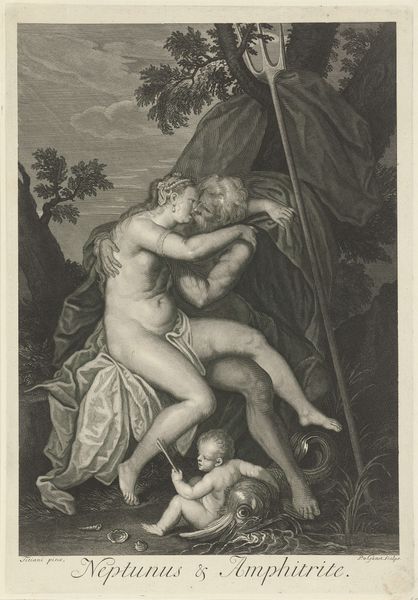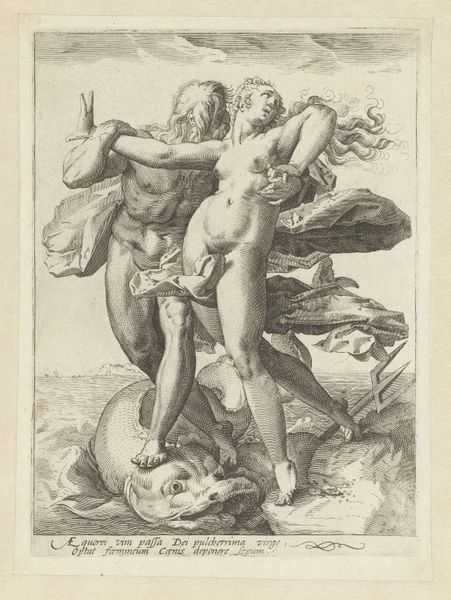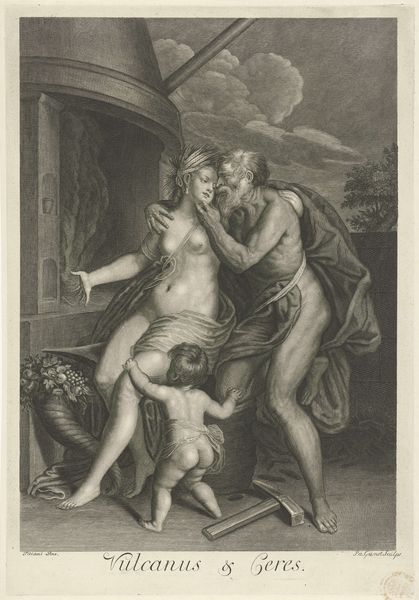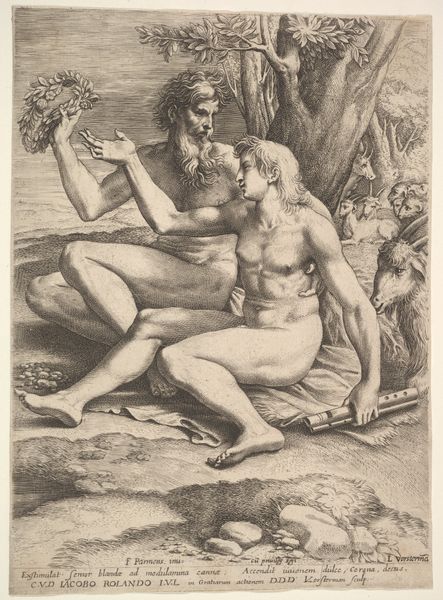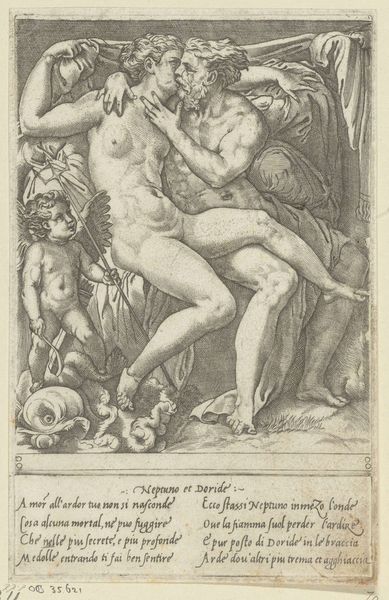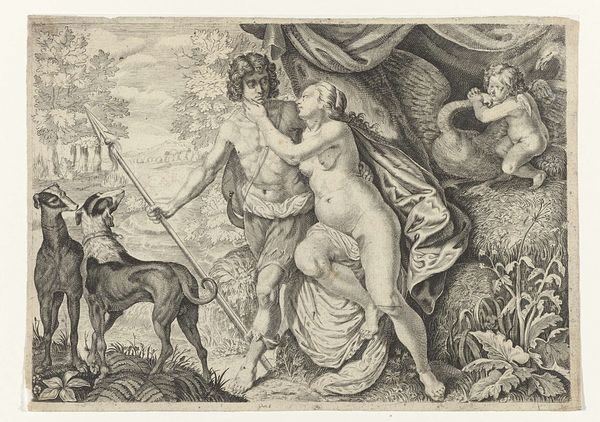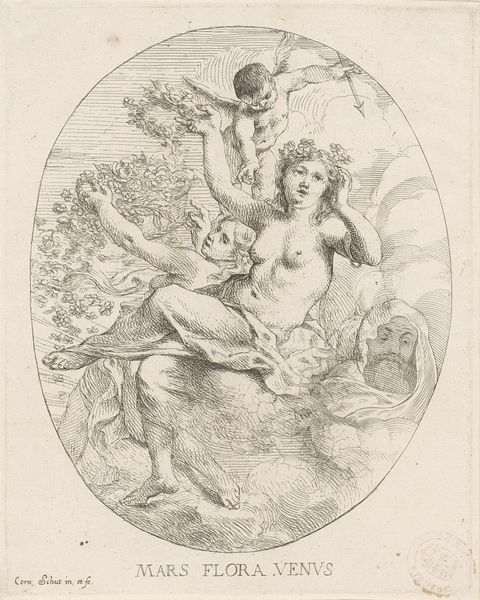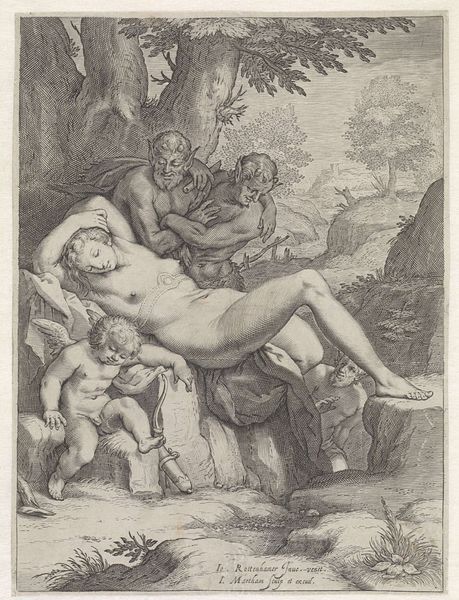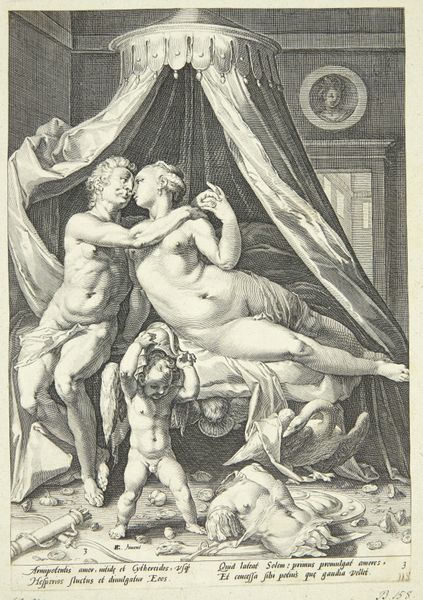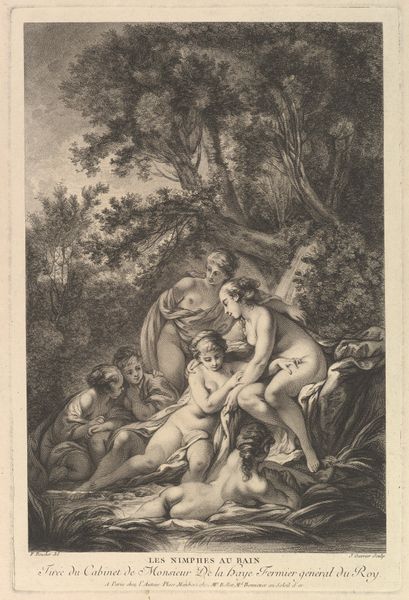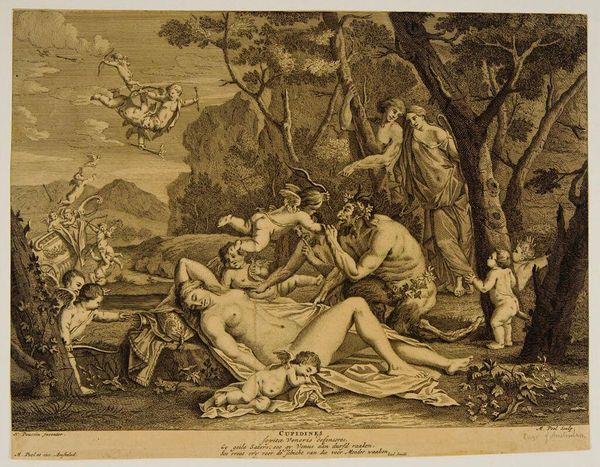
Dimensions: height 273 mm, width 196 mm
Copyright: Rijks Museum: Open Domain
Curator: Welcome to the Rijksmuseum. We're standing before Louis Fabritius Dubourg's 1748 drawing, "Mercurius met het hoofd van Argus," a pencil and colored pencil rendering of a rather dramatic mythological scene. Editor: It has a strange calmness despite the violence. The muted tones and delicate lines soften what is, after all, a beheading. I'm immediately struck by that contrast. Curator: The composition is meticulously structured. Note how Dubourg uses the diagonals of Mercury's sword and Argus's body to create a dynamic tension, a sort of visual choreography that guides the eye. Even the foliage contributes to a sophisticated planar arrangement. Editor: While the technical skill is undeniable, I'm drawn to the power dynamics at play here. Mercury, a figure of swiftness and communication, triumphs over Argus, the all-seeing giant with a hundred eyes. What does it mean to depict Hermes carrying Argus's head presented atop a slain calf? It certainly highlights vulnerability versus the illusion of constant surveillance and absolute power. Curator: Observe the musculature of Mercury, rendered with a Neoclassical idealization of the male form, almost heroic. The detailing—notice how Dubourg captures the softness of the skin, especially in contrast to the hard metal of Mercury's helmet, almost an object lesson in textures. It is clear Dubourg carefully deployed form to draw viewers into the subject matter. Editor: And what about Io, the heifer, if that indeed is who this is? There's a complicated symbolism surrounding the figure of Io's abuse, as she was often perceived as both powerful goddess figure and powerless, especially at the hands of powerful patriarchal figures. Mercury frees Io, who's become a proxy for an idea about exploited, victimized women. The scene implicates art itself in the transmission and consumption of trauma. Curator: Dubourg's artistic training at the French Academy, focusing on history painting and its didactic capabilities, encouraged artists to engage moralistic allegory. Editor: The history may seem remote, but such violent myths and imagery persist across time, so our critical work with them must as well. By refusing to look away, and thinking clearly about them, we open a path towards reflection. Curator: Indeed. These subtle formal effects ask us to consider what the artist found worthy of expression. Editor: And it forces us to confront the narratives we still perpetuate and accept.
Comments
No comments
Be the first to comment and join the conversation on the ultimate creative platform.
